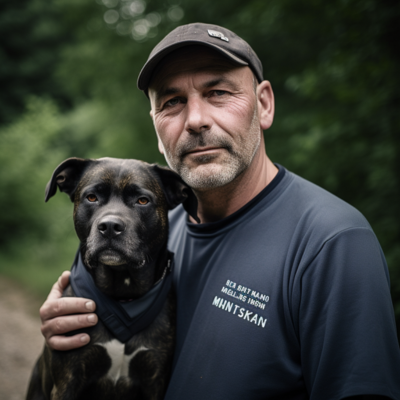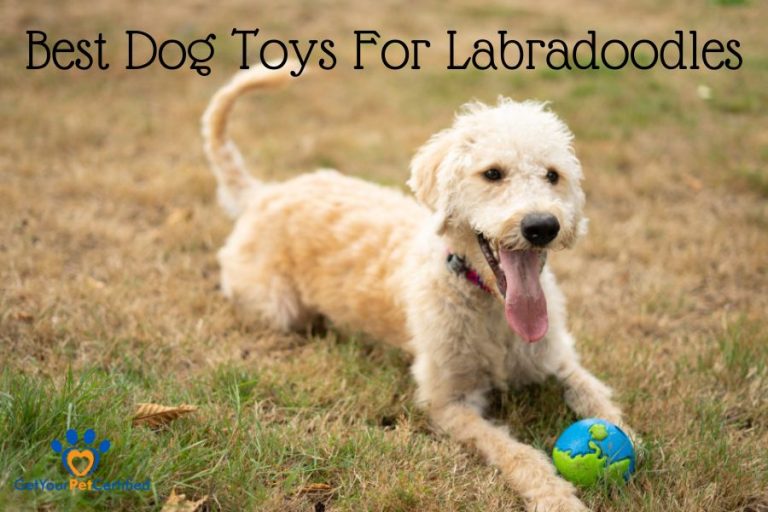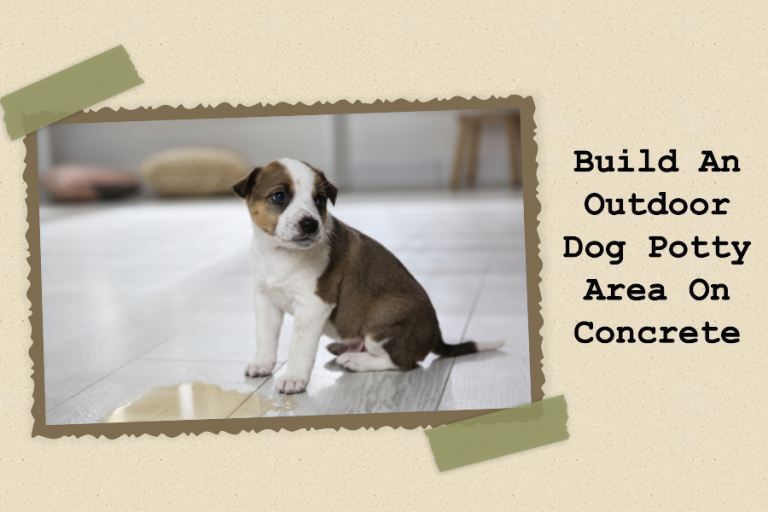Dog Whistle Training Command: Discover the Power of Sound
You may notice that in the park, some dogs seem to have a mystical connection with their owners, responding to their every order with such precision.
It leaves you scratching your heads and asking, “Why won’t my dog listen to me like that?”. But few know that the dog whistle may be behind this seemingly seamless communication.
Learn dog whistle training commands with us. To improve your dog’s reactivity, we will explain this unique method’s science and approach. In this guide, we’ll break down the types of commands, how they work in training, and why they’re a game-changer in your dog’s routine. These nifty tricks can help your dog listen better and make your life a breeze. So, join us on this journey to a better-behaved dog!
Understanding Dog Whistle Training
Dog whistle training uses a unique whistle that makes vibrations at frequencies that are very audible to dogs. We love dog whistle training! It’s a fun way to chat with your dog using a cool tool called a dog whistle.
This whistle emits frequencies outside the range of human hearing but is easily picked up by your dog’s acute hearing. The first step is to associate the whistle with positive experiences for your dog, such as mealtime or playtime. Then you may train your dog to respond to certain whistle tones, such as “sit” or “come,” for example.
The whistle's unique sound can be very helpful for dogs that are hyperactive or aggressive. It gets their attention and keeps them from doing things they shouldn't.
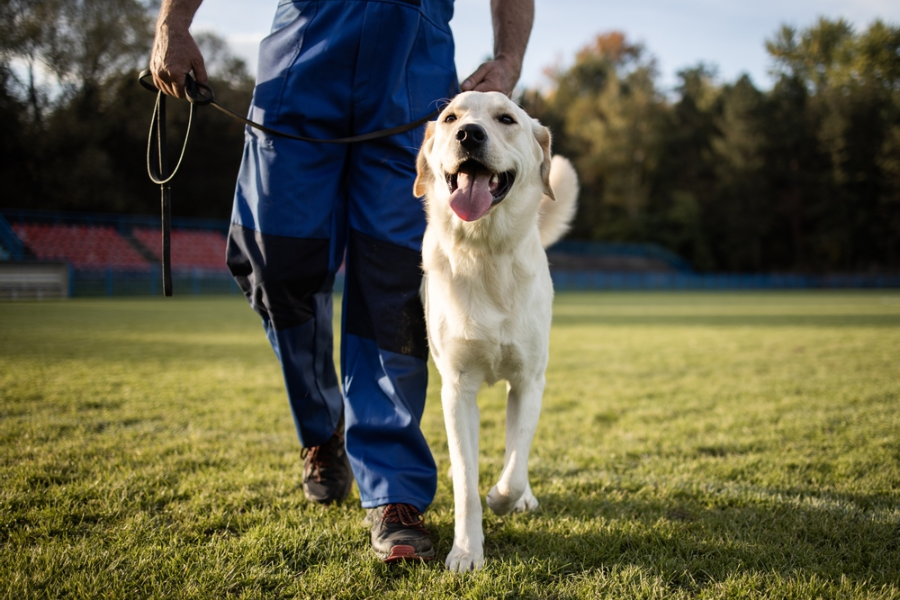
Why Use a Dog Whistle in Training
Why use a dog whistle? Well, it’s a great way to talk to your dog. Your dog’s ears are like super-powered hearing machines. They can hear the whistle’s sound even if it’s far away or if there’s a lot of other noise around.
- Consistency: A dog whistle always makes the same sound. The dog will be less likely to become confused throughout training if it consistently responds to the same cue.
- Clarity: Verbal orders may be difficult to hear in noisy environments such as parks and cities. Dogs can more easily distinguish dog whistles from other sounds because of their specific frequency.
- Distance: It might be challenging for a dog to understand verbal orders from afar, particularly in busy surroundings. A dog whistle’s range is substantially greater, allowing for clear communication even at great distances.
How Dog Whistles Work for Dogs
What happens when your dog hears a dog whistle? With their super ears, they can hear the high whistle sound that we can’t. This special sound gets their attention and, if they’ve been trained, tells them what to do next.
Dogs are able to hear a far broader spectrum of frequencies than humans. Dogs, in contrast to humans, have a hearing range of up to 65,000 Hz (people can only hear between 20 and 20,000 Hz). As dogs have a different hearing range than humans, many dog whistles work at a frequency that is inaudible to us.
This unique hearing ability shapes their behaviors and reactions to different stimuli, like the joy of digging or the call of a distant siren.
Understanding how your dog hears is the key to great whistle training. This means your dog will listen and respond to whistle commands really well, making dog whistle training a great way to help your dog learn good behavior.
In short, dog whistle training is a super way for you and your dog to understand each other better. By using a dog whistle and knowing how your dog hears, you’ll be chatting in ‘whistle language’ in no time!
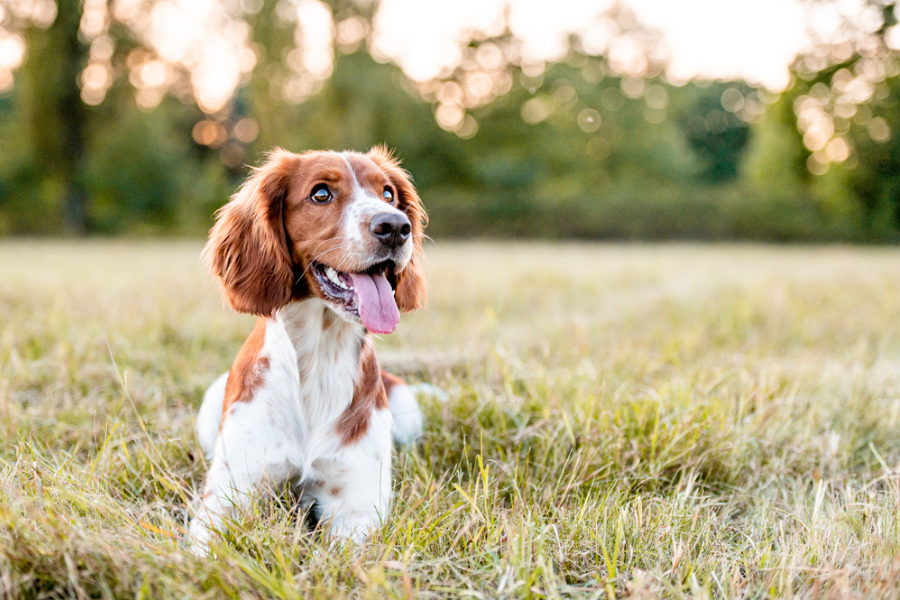
How Do You Train a Dog with a Dog Whistle?
Using a whistle to train your dog can work wonders! Always use the same whistle pattern for a specific command. Changing patterns will confuse your dog and hinder the training process. Let’s get into it!
When Should I Start Whistle Training My Dog?
It’s best to start whistle training when your dog is young, around 6 months old. But remember, each dog is different. Your dog’s mood, focus, and how quick they are to react matter too. Bear in mind their limited attention span and make training sessions as brief and enjoyable as possible.
For example, a jumpy dog might need a calm place to learn. If they’re too playful, you might want to wait a few months before introducing whistle training. However, a shy dog might need extra time to get used to the whistle sound.
The importance of timing: when to blow the whistle?
Whistle training is a form of classical conditioning, where a dog learns to associate the sound of a whistle with a particular command or action. Here’s a step-by-step breakdown of the process:
First, make your dog think of good times when they hear the whistle. This could be during mealtime or playtime. Then, slowly use the whistle as a sign for certain actions. The key is to keep at it! Keep linking the whistle sound to the action until your dog gets it.
Then, keep the pace and be consistent, every command should have a distinct whistle sound or pattern. For example, a single short blow for “sit” and a long blow for “stay”.
After that, we can start with commands your dog is already familiar with. Every time the dog successfully obeys the whistle command, reinforce the behavior with a reward. This can be in the form of treats, praise, or petting.
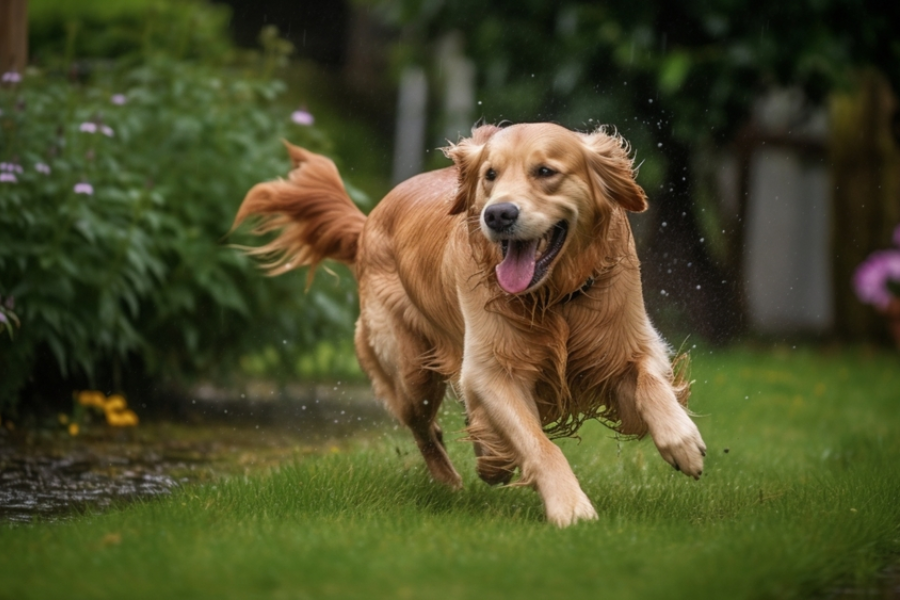
Things You Need to Pay Attention
Immediate Cue: The whistle should be blown immediately before or as you want the dog to perform an action. For instance, if you want your dog to sit, the whistle command for “sit” should be given just as the dog is about to sit or as you’re giving the verbal command.
Avoid Over-Whistling: Blowing the whistle repetitively without a clear purpose can desensitize the dog to its sound. It’s essential to use the whistle with intention and avoid unnecessary repetitions.
Avoiding Delays: Any delay between the desired action and the whistle command can confuse the dog. If you blow the whistle long after the dog has performed an action, it might not make the correct association.
Techniques for Introducing the Whistle to the Dog
Here are some techniques to ensure a smooth introduction:
Positive Association:
Goal: Make the dog perceive the whistle as a source of good things.
Technique: Blow the whistle gently and immediately reward your dog with a treat or praise. The dog will begin to associate the sound of the whistle with positive experiences.
Short and Fun Sessions:
Goal: Keep the dog’s interest and prevent them from feeling overwhelmed.
Technique: Limit the introduction sessions to a few minutes and ensure they are enjoyable for the dog. This can involve playing games where the whistle is used as a cue for fetching or finding treats.
Incorporating into daily routines:
Goal: Make the whistle a familiar part of the dog’s environment.
Technique: Use the whistle sporadically throughout the day, rewarding the dog when they come to you or show a positive reaction. This can be during playtime, before meals, or while going for walks.
Start slow when introducing the whistle. Blow it softly at first, then gradually louder. This way, your dog won’t be scared of the sound. Linking whistle sounds to actions is as simple as ‘sit’ or ‘stay’. Blow the whistle, then give the command. With time, your dog will link the whistle sound to the action, even without your voice.
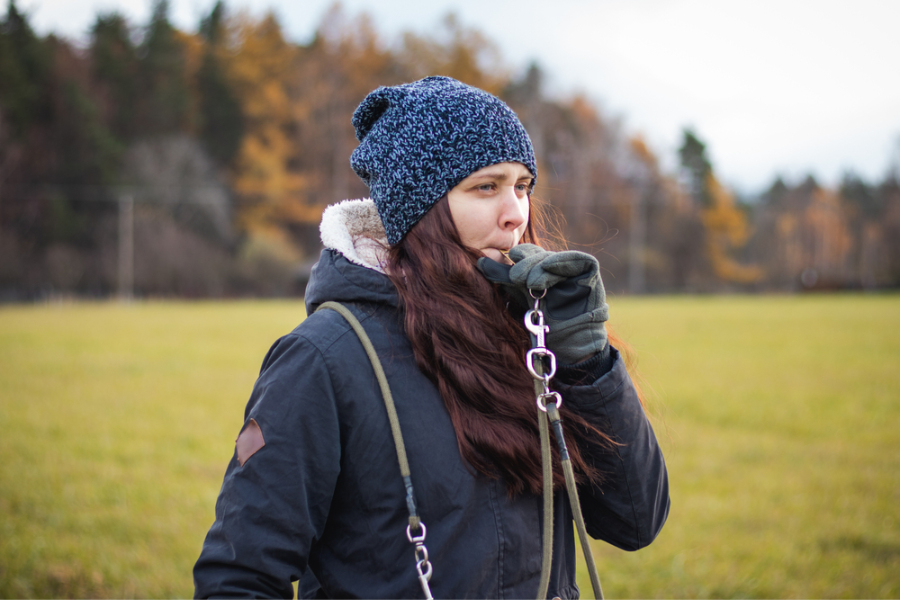
Common Dog Whistle Training Commands
To teach these commands, say the command, then blow the whistle. Give your dog a treat when they do it right. With time, your dog will react to the whistle commands without needing your voice.
Here is our top list of basic and advanced commands that can be taught using a dog whistle:
1. Recall (Come): The Foundational Command
The “come” or recall command is one of the most important lessons a dog can learn. Calling the dog back to you in an emergency increases safety, especially when you’re outside.
A dog’s understanding of the notion of reacting to the whistle is greatly enhanced once it has mastered recall, making the introduction of subsequent commands much simpler.
- Sit: A short, sharp blow can be used for this. Once the dog is in a sitting position, immediately reward it with a treat or praise.
- Down: This can be signaled with two short, sharp blows. As the dog lies down, give positive reinforcement.
- Heel: This command, which instructs the dog to walk closely beside you, can be indicated with a series of short, rhythmic blows.
- Stay: Use a long, sustained blow. Reinforce the command by rewarding the dog when it remains in place.
2. Advanced Commands Using a Dog Whistle
This advanced level includes two major types: Directional cues and distance control.
- Left and right: To guide your dog in a specific direction, use distinct patterns. For example, two long blows for “left” and three long blows for “right”.
- Stop: A very long, sustained blow can be effective in making the dog stop in its tracks.
- Increasing Distance: Start with commands when the dog is close, then gradually increase the distance as they become more reliable in their response. The whistle’s sound carries far, ensuring that the dog hears the command even when far away.
- Forward: Encourage forward movement with a series of quick, short blows.
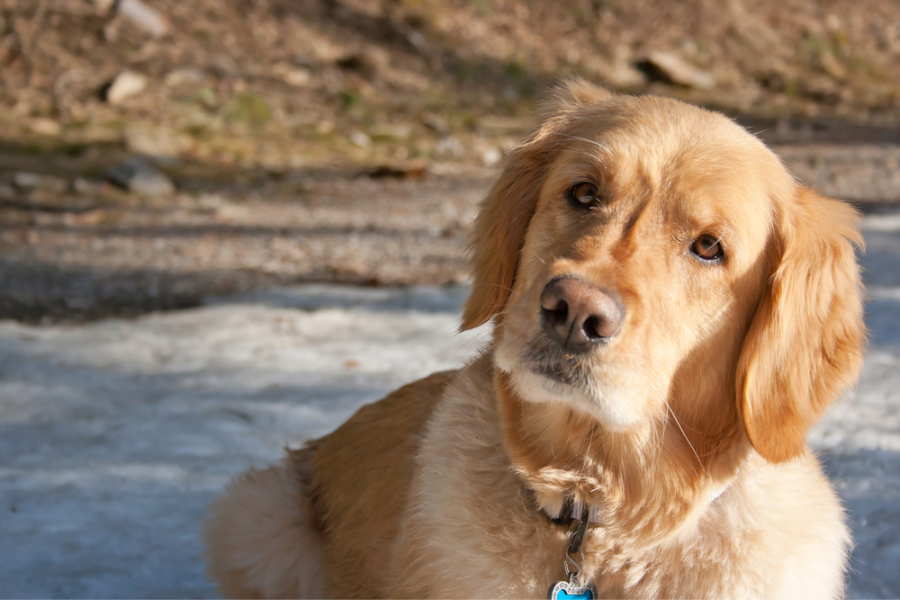
Do All Dogs Respond to Dog Whistles?
We often wonder, “Does every dog get whistle training?” The answer is a bit tricky. Each dog is unique, and whistle training doesn’t work the same for all.
How Dogs React to Whistle Training
Each dog reacts differently to a whistle. Some dogs are more whistle-friendly than others. This depends on the dog’s breed, mood, and past training. For example, let’s talk about Border Collies, people know these dogs for being smart and quick. But, like all breeds, Border Collies have flaws, they’re a bit too energetic or even stubborn at times. But here’s the good news: whistle training can help! Border Collies and Labradors, are more likely to react to whistle training because it’s in their genes.
If you know what breeds of dogs are more likely to be anxious, you can make whistle training more structured and calming for those dogs.
Also, a dog’s mood and past training experiences greatly affect their response. If your dog is naturally alert and has had fun with sound cues in the past, they’ll likely enjoy whistle training. So, it’s important to know your dog well before you start whistle training.
What Affects a Dog’s Reaction to Whistle Commands?
Several things can affect how a dog reacts to whistle commands. The dog’s breed is a big one. Some breeds are naturally more whistle-friendly. Age also matters. Young dogs are usually more open to any kind of training, including whistle training.
Good hearing is crucial too. Dogs with good ears are more likely to respond to whistle commands. And of course, past training matters. If you’ve used fun, rewarding training methods before, your dog will likely be more open to whistle training.
Fixing Common Whistle Training Problems
Whistle training can sometimes be tricky. You might run into problems like not being able to make the same whistle sound every time, confusing your dog with too many different whistle sounds, or not getting any response from your dog at all.
Recognizing signs of distress or confusion when using whistle
- Stress Signals: Dogs exhibit specific behaviors when stressed. These can include excessive yawning, lip licking, shaking off (as if wet), scratching, or sniffing the ground excessively.
- Inattention: If your dog consistently ignores the whistle or seems to “shut down”, they might be overwhelmed or confused.
- Avoidance Behavior: If your dog starts to move away, hide, or tries to escape every time you blow the whistle, it may indicate distress or fear.
- Excessive Vocalization: Sudden, loud barking, whining, or growling when the whistle is blown can be signs of discomfort or confusion.
To fix these problems, keep things simple and consistent. Make sure each whistle command always sounds the same. This will help your dog understand what you want. If your dog seems confused or ignores the whistle, go back to basic training and try again. Remember, being patient and rewarding your dog for good behavior is key.
Whistle training can be a great way to train your dog, but it doesn’t work the same for every dog. Knowing your dog well and being ready to tackle common training problems will help you succeed at whistle training.
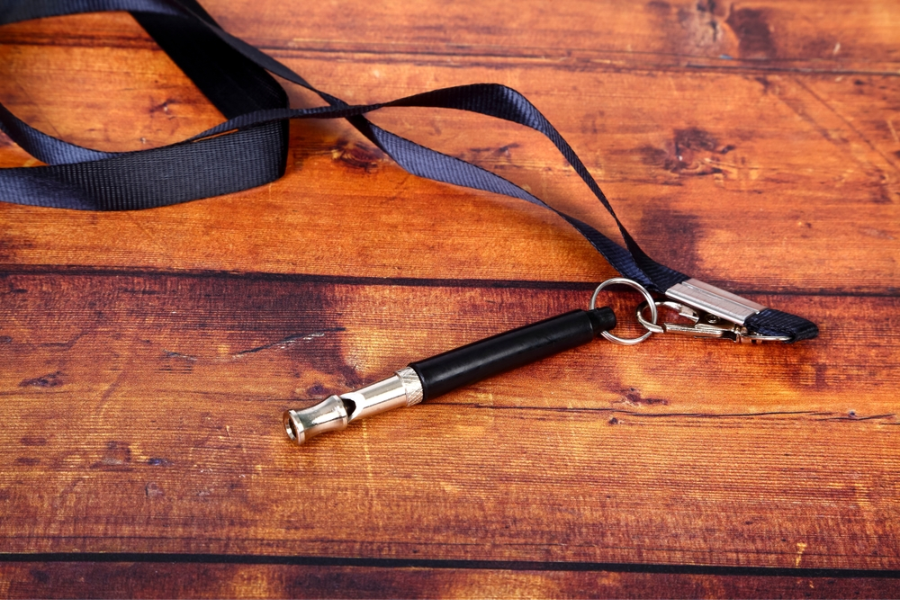
Picking the Right Dog Whistle
When teaching your dog whistle commands, it’s vital to pick the right whistle. We’re here to guide you on what to consider and suggest the best dog whistles out there.
What to Think About When Buying a Dog Whistle
Here are four things to keep in mind when you’re shopping for a dog whistle:
1. Sound Frequency: Dogs hear better than humans. So, pick a whistle that your dog can hear well. Usually, frequencies between 23,000 and 54,000 hertz work best.
2. Volume Control: A whistle that lets you change the volume is great. It means you can adjust the sound based on how far away your dog is and how noisy it is around you.
3. Durability: Training your dog takes time. So, you’ll want a whistle that can handle a lot of use.
4. Ease of Use: Choose a whistle that’s easy to use and comfortable to hold. It should also be easy to blow for a long time.
Our Top Dog Whistle Picks
Here are our favorite dog whistles, based on what we’ve heard from users and experts:
1. Acme 210.5 Dog Whistle: This whistle always makes the same sound, no matter how hard you blow it. It’s easy to use and works best for close-up training.
2. SportDOG Brand Roy Gonia Special Whistle: This whistle is perfect for training in big, open spaces. It’s easy to blow and can make a sound that carries a long way.
3. Forepets Professional WhistCall Dog Whistle: This whistle comes with a handy neck strap and a protective cap. You can change its frequency, and it’s great for training and stopping unwanted barking.
Remember, the best whistle is the one that both you and your dog like. It might take some time to find the right one, but with a bit of patience, you’ll find the perfect tool for your dog whistle commands.
Dog Whistle or Clicker: What’s the Difference?
We love helping our furry friends learn new things. Two tools we often use are dog whistles and clickers. But what sets them apart? Let’s get into it!
What’s a Dog Clicker?
Imagine a little tool that goes ‘click’ when you press it. That’s a dog clicker! It tells your dog, “Good job, buddy! Treat’s coming!” It’s a simple and fun way to teach your dog new tricks.
Dog Whistle vs. Clicker: Which is Better?
Both dog whistles and clickers have their perks. Dog whistles are great for calling your dog from a distance. Even if it’s noisy, your dog can hear the whistle. It’s like having a long-distance chat with your dog!
A clicker, though, is for up-close teaching. The ‘click’ sound is like a gold star for your dog, telling them they did something right. It’s perfect for teaching new tricks and behaviors.
So, which one is better? Well, it depends on you, your dog, and what you’re teaching them.
Different Between Dog Whistle and Clicker
With a dog whistle, you can chat with your dog from far away. The whistle’s sound is always the same, so it’s less confusing for your dog. But, it might take your dog a bit more time to understand what the whistle means.
Clicker training is instant. As soon as your dog hears the ‘click’ they know they’ve done a good job. It’s small, easy to carry, and fun for your dog. But, it’s not great for long distances or noisy places.
| Feature/Aspect | Dog Whistle | Clicker |
|---|---|---|
| Primary Use | Communication and obedience training | Marker for desired behavior |
| Sound Range | Typically ultrasonic; beyond human hearing range | Audible click within human hearing range |
| Distance Effectiveness | Effective over long distances | Mostly effective at close range |
In the end, whether you pick a dog whistle or a clicker is up to you. You might even want to use both! Each tool can help your dog in different ways, making training fun and successful.
Conclusion
We’ve walked a long road in dog whistle training. Together, we’ve unlocking the potential to communicate with our dogs in a language. This method not only refines their behavior but also deepens the bond we share with our canine companions.
Considering the varied reactions dogs might have to whistle commands, we discussed the influence of factors like breed, age, and prior training experiences. We addressed the challenges one might encounter during whistle training, equipping you with strategies to navigate them. We think it can do wonders for you and your dog. So go ahead, give it a whirl!

